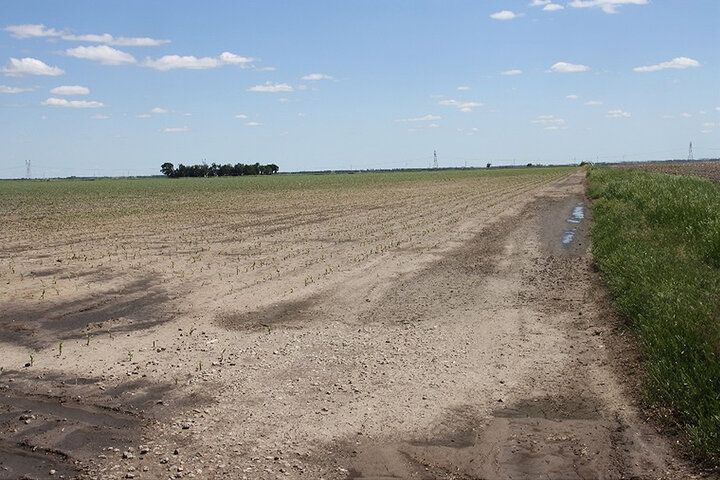Bruno Lena
Extension Educator in Platte and Boone Counties
Rainfall slowed down a little in the area, allowing good conditions for planting.
Corn — Corn planting is pretty much done, with a few fields yet to be planted with soybeans. Corn is around VE-V3 and soybean VE-V2.
Alfalfa — Alfalfa weevil was confirmed in the region.
The accumulated rainfall amounts since mid-March have increased moisture content to full capacity in most parts of the region. This is a much better scenario compared with last year's dry spring, in which many growers started their irrigation system in early June to compensate for the drought. Check this article in which we talk about the impact of rainfall on soil available moisture.
Ron Seymour
Extension Educator in Adams, Kearney, Franklin and Webster Counties
Soil moisture conditions have improved because of recent rainfall. This has resulted in many crop fields with moist spots on the low ends.
Pastures have also improved but moisture has soaked in through only the top 12 inches.
Soybean — Soybean planting has been lagging behind because of wet field conditions. About 60% of the crop has been planted with about 30% emergence. The emerged plants are in the VC-V1 growth stages.
Corn — Field corn planting is mostly complete and about 90% of the plants have emerged. Most of plants are in the V3-V4 growth stages. A few farmers have begun sidedress nitrogen applications.
Wheat — Wheat fields are generally in the bloom to milk stages. A few fields have a low level of leaf rust infection.

TJ Prochaska
Extension Educator in Colfax, Butler and Polk Counties
Soybean — Soybean planting is likely to wrap during the upcoming week, weather permitting.
Significant wind damage occurred from last week’s storm with many pivots down in the area. That is especially true between Fremont and Columbus. Other damage was observed in the area, so local growers have been on clean-up duty. The National Weather Service did confirm a small tornado in Colfax County. Heavy and rapid rainfall lead to some washouts in local fields, along with flash flooding in some areas.
Gary Stone
Extension Educator in the Panhandle
Irrigation water deliveries through the main canal system in the North Platte Valley continue as growers irrigate crops. Snowpack melt runoff continues in the upper region of the North Platte River system. Irrigation water outlook continues to be favorable for the region this season.
Sugarbeets — Sugarbeets have emerged and are doing well.
Corn — Corn planting is completed and emerging.
Wheat — Winter wheat is heading out across most of the Panhandle and overall looks good.
Dry Beans — Dry bean planting is starting and should be completed in the next several weeks.
Alfalfa — Some first cutting alfalfa is taking place. Minimal reports of alfalfa weevil across the area.
Sunflower and millet planting to start in several weeks. Miller moths are starting to show up and peak flight is not expected for several weeks. Severe weather was forecasted for May 29 — hope to avoid the hail! Warmer temperatures forecasted for next week.

Kayla Safarik
Extension Educator in Valley, Blaine, Loup, Garfield, Wheeler, Custer, Greeley, Sherman and Howard Counties
Portions of Howard and Sherman counties in central Nebraska received rainfall totals of over four inches in a matter of a few hours Thursday morning, May 30. In some areas — specifically low-lying areas and along waterways — flash flooding was an issue. Many communities are also dealing with completely covered roads and flooded fields.
With many farmers finished or close to finishing planting, there are lots of questions regarding how germinating and emerging crops will do. Crop survival will depend on crop growth stage, duration of flooding, air-soil temperature, and how well the field can drain. Unfortunately, now we have to just wait and see how the crop looks after the water recedes and hope for cooler temperatures.
Since most corn emerged is prior to V6 (VE-V3), it is expected that plants can survive under water for two to four days if temperatures do not exceed 77°F. For emerging soybeans, flooding during vegetative stages will result in minimal yield losses if flooding lasts less than 48 hours. If flooded for four to five days, fewer nodes develop and plants will be shorter. If flooded for six or more days, possible stand and yield loss.
Nebraska Extension has additional resources regarding flooding and replant considerations available online on CropWatch.

